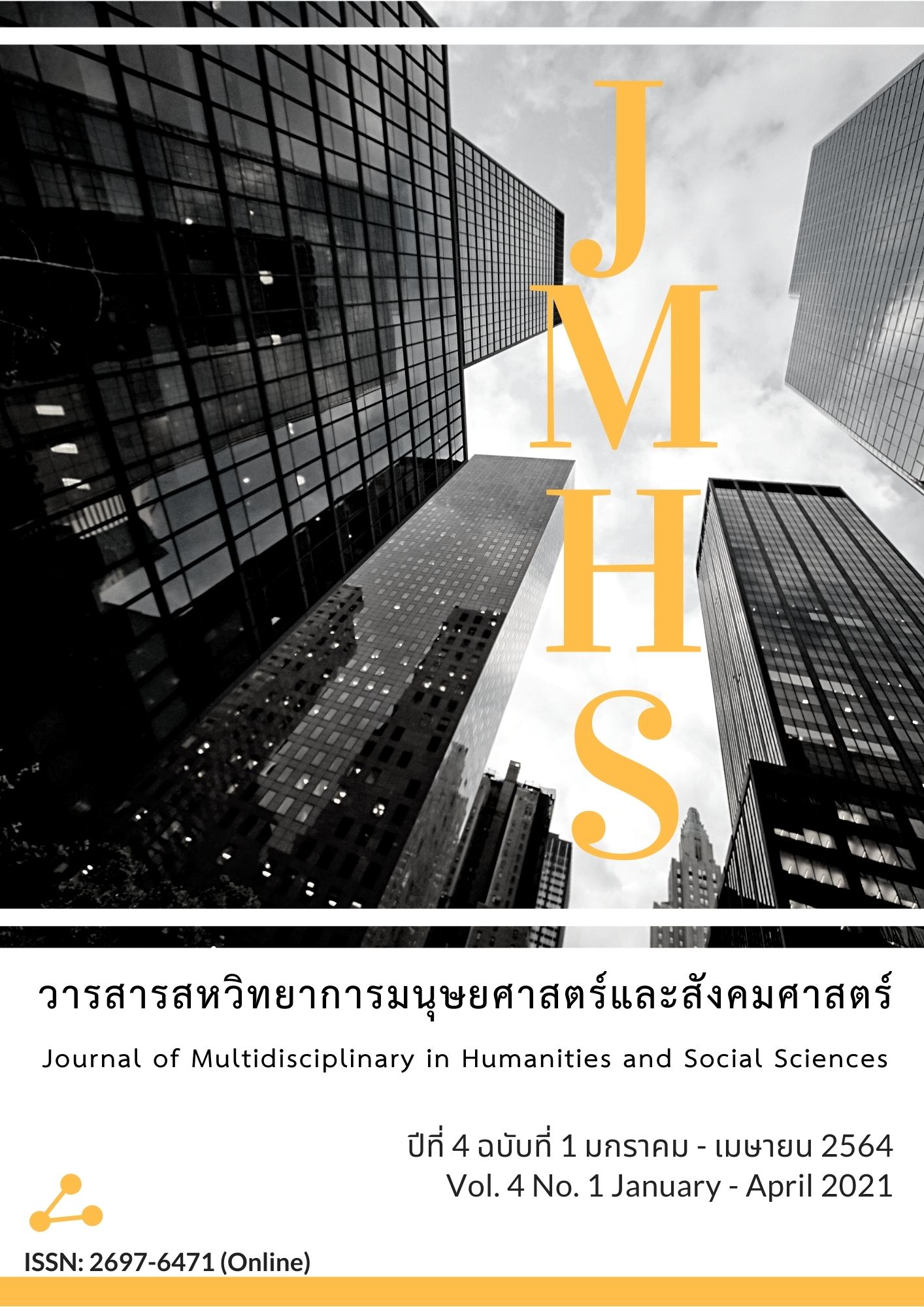Thai Blessing Ceremony of Kui Ethnic Group in Sisaket Province, Thailand.
Main Article Content
Abstract
The purposes of this research were to 1) study the Thai blessing ceremony of a Kui ethnic group in Sisaket province, and 2) study the values of the Thai blessing ceremony of a Kui ethnic group in Sisaket province. The key informants were community leader, ritual leader, religious leader, and cultural leader. The instruments used were in-depth interview, focus group, formal observation, and informal observation, analyzing content and then descriptive writing. It was found that Kui people believed in ancestral ghost and Buddhism mixed together. Kui people have connected ceremony and belief in ancestral ghost together, offering sacrifice to ghost before performing ceremony every time believed that those souls still dwell being closed with their lineages by not neglecting and trying to protect, give good luck, and give security for their lineages. The Thai blessing ceremony of a Kui ethnic group is comforting to stay with oneself and giving ancestral ghost helping protect divided into 3 types as appearance and chance used in performing the ceremony as follows: 1) welcoming back in the period of transition of life; namely performing the ceremony of newborn babies, performing the ceremony of person about to be ordained as a Buddhist priest, performing the ceremony of monks, performing the ceremony of wedding ceremony, wedding ceremony of the image of Buddha in funeral rites and performing ceremony for propitiousness; 2) performing the ceremony in sacrificing to the spirits; namely performing the ceremony of paddy and performing the ceremony of housewarming; and 3) performing the ceremony for patients; namely performing the ceremony of welcoming back and exorcising and morale ceremony. The welcoming ceremony of Kui people has values towards persons and society including body, mind, mood, surrounding and society, value towards persons has ability in confronting problems occurred and caused Kui society having warmth and mental stability for members in society.
Article Details
Views and opinions appearing in the Journal it is the responsibility of the author of the article, and does not constitute the view and responsibility of the editorial team.
References
กาญจนา แก้วเทพ. (2544). ศาสตร์แห่งสื่อและวัฒนธรรมศึกษา. กรุงเทพฯ: เอติสันเพรสโปรดักส์.
กุหลาบ มัลลิกะมาส. (2537). ความรู้ทั่วไปเกี่ยวกับคติชนวิทยา เอกสารการสอนชุดวิชาภาษาไทย 8. (พิมพ์ครั้งที่ 3). กรุงเทพฯ: มหาวิทยาลัยสุโขทัยธรรมาธิราช.
ชื่น ศรีสวัสดิ์. (2533). ประวัติศาสตร์และวัฒนธรรมการเลี้ยงช้างของชาวกูย (ส่วย) ในจังหวัดสุรินทร์. สุรินทร์: คณะวิทยาการจัดการสหวิทยาเขตอีสานใต้.
จิตร ภูมิศักดิ์. (2544). ความเป็นมาของคำสยาม ไทย ลาว และขอมและลักษณะทางสังคมของชนชาติ ฉบับสมบูรณ์. (พิมพ์ครั้งที่ 5). กรุงเทพฯ: ศยาม.
ไพฑูรย์ มีกุศล. (2545). การพัฒนาสังคมของกลุ่มชาติพันธุ์เขมรป่าดง. นนทบุรี: มหาวิทยาลัยสุโขทัยธรรมาธิราช.
ประมวญ ดิคคินสัน. (2521). คติชาวบ้านการศึกษาในด้านมานุษยวิทยา. กรุงเทพฯ: แพร่พิทยาอินเตอร์เนชั่นแนล.
ศิราพร ณ ถลาง. (2548). ทฤษฎีคติชนวิทยา: วิธีวิทยาในการวิเคราะห์ตำนาน-นิทานพื้นบ้าน. กรุงเทพฯ: โครงการเผยแพร่ผลงานทางวิชาการ คณะอักษรศาสตร์ จุฬาลงกรณ์มหาวิทยาลัย.
อิศราพร จันทร์ทอง. (2535). บทบาทหน้าที่ของพิธีแก็ลมอของชาวกูย บ้านสำโรงทาบ อำเภอสำโรงทาบ จังหวัดสุรินทร์ (วิทยานิพนธ์ศิลปศาสตรมหาบัณฑิต). มหาวิทยาลัยศิลปากร.
เอกวิทย์ ณ ถลาง. (2540). ภูมิปัญญาชาวบ้านสี่ภูมิภาค: วิถีชีวิตและกระบวนการเรียนรู้ของชาวบ้านไทย. นนทบุรี: มหาวิทยาลัยสุโขทัยธรรมาธิราช.
Durkheim, E. (1960). The Division of Labor in Society. (4th ed.) New York: Free Press.
Seidenfaden, E. (1952). The Kui People of Cambodia and Siam. Journal of Siam Society, 39(2), 144-180.


